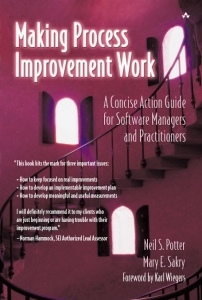Development Organizations
(Product, IT, software, hardware and systems development)
(Also see CMMI-SVC resource page)
Many organizations try to improve their quality and productivity by establishing a company-wide process improvement program. These programs often result in large amounts of process documentation which eventually becomes a burden or is ignored completely. In many cases, the organization is left with very little benefit to show for its efforts.
The model for development organizations, CMMI-DEV V2.0, guides groups such as software, IT, hardware and systems projects in their improvement efforts.
How we help organizations
We provide:
- Consulting and workshops on specific CMMI-development topic areas
- Consulting and workshops on Agile/Scrum (with and without CMMI)
- Process improvement training and consulting (e.g., goal setting, action plan development)
- Educational workshops (from 3 hours to 3 days, see below)
- Informal and formal appraisals to determine where you are today (with or without reference to published frameworks like CMMI and Scrum)
Useful links
- Achieving CMMI-Development Maturity Levels 2 & 3 Efficiently – NEW online recorded class
- How-to book on Making Process Improvement Work: A Concise Action Guide for Software Managers and Practitioners
- Summary of CMMI for Development
- Article: Goal-Problem Improvement
- Article: Adding Practices to Scrum to Achieve Your Goals (and comparison with CMMI Level 3)
- Article: Keeping processes simple
- Article: Expediting CMMI Maturity Level 3 – 10 Essential Tips and Their Demons
Educational workshops
Each workshop focuses on using CMMI practices to achieve business goals and solve real problems. Participants start each workshop by identifying their group’s goals and problems. As they learn about each model component they select elements that best help them move towards their goals and fix their problems.
Throughout the workshops we discuss the problems that people encounter while doing process improvement. These include over-documenting processes, implementing too much change at once, resistance to change, rote use of the CMMI, and maintaining management buy-in.

 The Process Group helps you improve your organization's capability to routinely meet deadlines and delivery quality expectations. We are certified CMMI appraisers / trainers and Certified Scrum Masters.
The Process Group helps you improve your organization's capability to routinely meet deadlines and delivery quality expectations. We are certified CMMI appraisers / trainers and Certified Scrum Masters. 